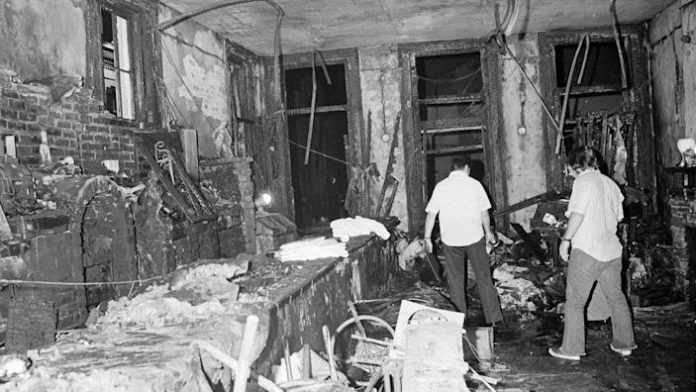
The late journalist and New Orleans resident Roy Reed, who passed away in 2017, is perhaps best known for his enterprising Civil Rights-era coverage in The New York Times, including a March 1965 attack of state troopers on unarmed marchers in Selma, Alabama at the Edmund Pettus Bridge.
In his front-page Times story of the ensuing carnage, known as Bloody Sunday, Reed boldly wrote of white troopers who “tore through column of Negro demonstrators with tear gas, nightsticks and whips.” The New Orleans Times-Picayune, by comparison, paired newswire coverage of the Selma attack with a sympathetic story of offending lawman Sheriff James G. Clark, who complained of death threats on himself and his family by “Negro extremist groups.”
Roy Reed’s special report of Bloody Sunday at Selma would rile sympathy for Black Freedom causes and help speed political passage of the 1965 Voting Rights Act. Reverend Dr. Martin Luther King, Jr. would join the next two Selma to Montgomery marches alongside the young activist John Lewis. Reed’s journalistic contribution to queer history, conversely, remains unknown to most Americans. It’s so unjustly obscure that even Reed’s very worthy New York Times obituary failed to mention it.
The UpStairs Lounge Fire Killed 32 People. Its Legacy Still Haunts Black Gay New Orleans
Like Selma, Reed would write the definitive breaking news story on the assault of another marginalized community.
In the late hours of Sunday, June 24, 1973, Roy Reed was jolted alert by a phone call from the Times Annex in New York City to his home on Upperline Street in Uptown New Orleans, two blocks off St. Charles Avenue. His night editor on the national desk informed him of a deadly fire downtown, with multiple dead.
Reed raced in his car towards a smoldering, second-story bar perched on the edge of the French Quarter. There, before a scorched canopy bearing the cursive words “Up Stairs,” Reed found a mob of drunken spectators and more than 100 police and firefighters, who were packing away hoses and craning down bodies from a bombed-out building.
This was the Up Stairs Lounge fire, a notorious arson attack on a gay bar that would claim 32 lives. “The first thing that hits you was the odor, burning flesh,” remembered Reed in one of his last living interviews for my book Tinderbox: The Untold Story of the Up Stairs Lounge Fire and the Rise of Gay Liberation, a nonfiction account of the fire. “Then the sight of the man in the window, the expression of horror on his face.”
That ashen figure in the window was Reverend Bill Larson, pastor of the local gay-friendly Metropolitan Community Church. Though Reed arrived well after the emergency was in hand, he still witnessed Larson in his death pose because authorities would leave the man’s body dangling out of the building for hours.
Suppressing his natural shock, clicking into action, the veteran reporter interviewed gay Up Stairs Lounge bartender Buddy Rasmussen and pieced together a narrative of a blue-collar gay haven incinerated with the aid of lighter fluid. Some reporters of the day would have flinched at the notion of interviewing any openly gay man. Reed pressed ahead, sensing what may have sparked this deadly fire: Explosive anger.
“I tried to put myself in the mind or minds of those guys,” he recalled decades later. “Those few minutes of unmanageable rage when they impulsively lit that fire.” Historians now recognize that the blaze was most likely set by a disturbed sex worker named Rodger Dale Nunez, who fellow patrons overheard threatening to “burn” the establishment when he was forcibly ejected by bar staff several minutes before the start of the fire. Reed’s spur-of-the-moment assessment that this conflagration was intentional, and that anger lit the match, has therefore proven prescient.
Making efficient use of his approximately 30 minutes at the site, Reed even spoke to a photographer who’d been permitted into that upstairs bar to document the piles of bodies. Dashing to his typewriter to try to meet a 10:30 p.m. deadline for next day coverage, Reed selected his quotes and cried while outlining a story on his quick trip to the Times’ downtown offices on Carondelet Street.
In his mind, he kept seeing that burnt man in the window. The grotesque carnage, men marked by smoke and crying out the names of the missing, reminded him of the scene at the bridge in Selma after the horses charged the crowd amidst the teargas. Then it dawned on Reed, as he recalled in our interview: “This was the first assignment I ever received concerning the American homosexual community.” Reed figured that the sexuality of the victims was an undercurrent that eluded the editor who tasked him to report the fire. Had this editor known, Reed suspected that he never would have been assigned the story.
Newsrooms and readers of the era would express almost universal revulsion when dealing with the topic of “deviate” sexualities, and no leading paper in the country would print the radical word “Gay” without enclosing it in patronizing quotation marks. As point of fact, The New York Times would not revise its style guide to allow the word “Gay,” instead of “homosexual,” until 1987.
Queer behavior by any name tended to be avoided wholesale by the press unless its mention was part of exonerating an anti-queer attacker. For example, in the Times’ 1969 coverage of the Stonewall Riot, headlines lamented the “4 Policemen Hurt in ‘Village’ Raid,” while the story scolded the “hundreds of young men on a rampage,” who innocent policemen were compelled to confront.
The San Francisco Chronicle didn’t even cover the 1966 Compton’s Cafeteria Riot, an uprising of gender minorities who forcibly repelled arresting police from a Tenderloin district eatery. The Miami Herald’s 1954 coverage of the murder of “handsome Eastern Air Lines steward” William T. Simpson didn’t mention Simpson’s sexuality until the 19-year-old “Youth” who confessed to shooting and killing Simpson accused the man of “improper advances.”
A white, married, heterosexual, self-professed “hick-talking Arkansawyer,” it’s remarkable that Roy Reed in 1973 did not carry such common prejudices. Reed knew he would be bound by his duty as journalist to write down an unambiguous fact, a provocative word so unpopular it offended his editors back in New York: The Up Stairs Lounge bar served “homosexual” patrons. It was a fact, Reed recalled in our interview, that “could point to motive in the event of a crime.”
Reed made his deadline. His 700+ word, front-page story in The New York Times, entitled “Flash Fire in New Orleans Kills at Least Thirty-Two in Bar,” would be the only special report on the tragedy to inform the public of the bar’s “homosexual” clientele the next morning. Other major market publications ignored or obscured the reality that the destruction of the Up Stairs Lounge was an intentionally set blaze that killed gay men.
Though a sympathetic, closeted gay local journalist named John LaPlace co-reported one of the New Orleans Times-Picayune’s front-page stories on the fire that Monday, no one in his newsroom would take the risk of printing that dangerous word. Likewise, The Times in London excluded homosexuality from their story. Neither the Chicago Tribune nor the Los Angeles Times mentioned the likely orientation of the victims in their front-page coverage, instead calling the Up Stairs Lounge “a popular place on Sundays,” hinting at a den of undesirables up to trouble on the proverbial Lord’s Day.
Roy Reed was, in essence, a lonely reporting voice who got the message past a blockade. His single mention of the patron’s sexualities—“A neighboring bartender said the place was frequented by homosexuals”—troubled Times editors so profoundly that they shuffled the mention off the newspaper’s front page and buried it ten paragraphs deep into the story after a 65-page jump.
Yet Reed’s Monday morning stand presaged a dramatic shift in local coverage. He was, after all, a notable New Orleans writer who’d just shattered taboos by portraying homosexuals not as perpetrators but as victims in the national newspaper of record.
The New Orleans States-Item, an afternoon newspaper sharing ownership and a newsroom with the Times-Picayune, printed the word “homosexuals” in its front-page fire coverage later that Monday. They also quoted New Orleans Police Department Major Henry M. Morris as castigating the Up Stairs Lounge by saying, “Some thieves hung out there, and you know this was a queer bar.”
The national CBS news desk, as well as the local affiliate WWL-TV, aired evening news pieces that called the Up Stairs Lounge a “hangout for homosexuals.”. Decisively, the New Orleans Times-Picayune amended its reporting that Tuesday morning to follow suit with the States-Item, and an alt-weekly in the French Quarter called the Vieux Carré Courier covered the fire exclusively from a homosexual angle.
Nonetheless, all of this anxiety surrounding a basic word that one of the most legendary journalists of the 20th century deemed “a crucial detail” revealed bias warping the public perception of an international news incident, reported as far away as London and Australia.
Most American newsreaders learned about the Up Stairs Lounge, the deadliest fire on record in New Orleans history and the worst mass killing of queer citizens in 20th century America, as a random bar fire without social context—and forgot it in a blip.
Indeed, the initial media “straight-wash” resulted in the Up Stairs Lounge all but disappearing from discourse within days. Reed attempted to continue his coverage of the fire but only succeeding in publishing a single follow-up story, which alarmed editors with a headline that began “Arson Suspected…,” before being forcibly reassigned to tamer material.
As even local interest waned, public officials in New Orleans worked hard to pivot Up Stairs Lounge coverage into a debate about the necessity for installing indoor fire sprinklers, and closeted gay constituencies rejected attempts to publicize or politicize the tragedy, for fear of police reprisals.
“While I can understand the various gay leaders from around the country coming here to help, I do not want my bar or this tragedy to be used to further any of their causes,” Up Stairs Lounge owner Phil Esteve told the Philadelphia Inquirer while standing in the ruins of his bar. Locals like Esteve would not raise ire when police closed the Up Stairs Lounge investigation that August without interviewing the chief suspect.
Though detectives recovered a lighter fluid canister in the location where the fire began, they declared the fire to be of “undetermined origin.” Chief suspect Nunez would die by suicide about a year later having never been interviewed by New Orleans police. The fire at the Up Stairs Lounge is still, officially, an unsolved crime.
Though Roy Reed’s report of Bloody Sunday at Selma would become a rally cry for the Civil Rights movement, Reed’s Up Stairs Lounge story was not part of a similar call to action for “Gay Liberation” in the 1970s South. Decades later, however, the Up Stairs Lounge did develop such a legacy when queer activists in New Orleans cited the tragedy to secure anti-discrimination protections for sexual orientation and gender identity in 1991 and 1998, respectively.
Since those activists, led by fire survivor Stewart Butler, dared to speak the words “Up Stairs Lounge” in their 1980s and 1990s campaigns, local coverage of the fire evolved to portray the event as a human rights tragedy, with the victims and their sexualities as centerpiece. National publications now elegize the fire in the new century. Today, there is a permanent memorial at the Up Stairs Lounge site, and queer Gen-Z activists wear t-shirts bearing the phrase, “Remember the Up Stairs Lounge.”
Roy Reed deserves credit for reporting a seminal event in queer history as an ally of accuracy—on a day and at an hour when the publications like the Times-Picayune would not. He seeded a queer truth that blossoms today in anniversary memorials held for the fire victims in New Orleans.
Reed’s coverage of the Up Stairs Lounge should be hailed alongside his work at Selma, revealing connective tissue between the human rights movements for Black and queer Americans, for whom great tragedy provoked harrowing transformation. These reporting feats now reverberate through time and reveal an ever-present need for allies in our unrelenting struggle to realize a “more perfect union.”
I think about my conversation with Roy Reed, who he was, how he didn’t polish his own star, how he’d taken the tear gas with the Selma protesters. I’m sure I’ll think about my talk with him for the rest of my life. And I see his legacy today in individuals like Darnella Frazier, who documented the brutal murder of George Floyd and who, for that courageous recording, received a special citation Pulitzer.
Reed’s example lives in every unbiased citizen reporting truth in the face of state-sanctioned violence. How many fail to document such violence? How many ignore it? From Selma to Stonewall, Minneapolis to the Up Stairs Lounge, the price of such violence must not be erased.
Read more at The Daily Beast.
Get our top stories in your inbox every day. Sign up now!
Daily Beast Membership: Beast Inside goes deeper on the stories that matter to you. Learn more.








